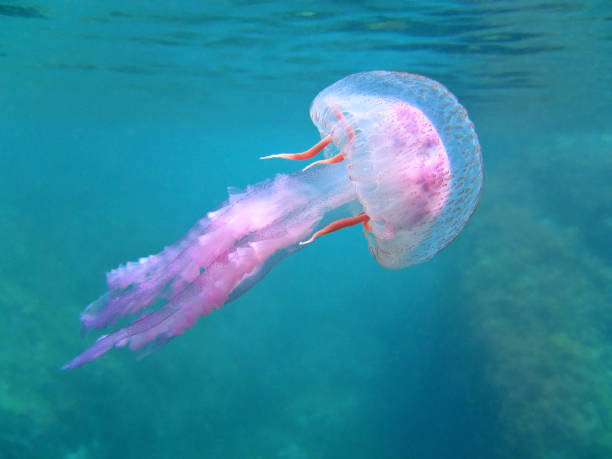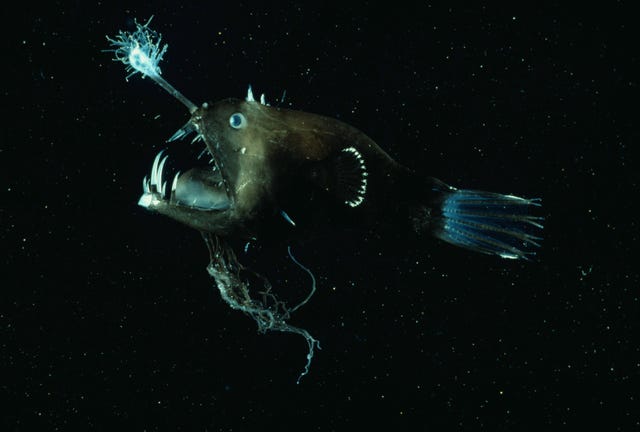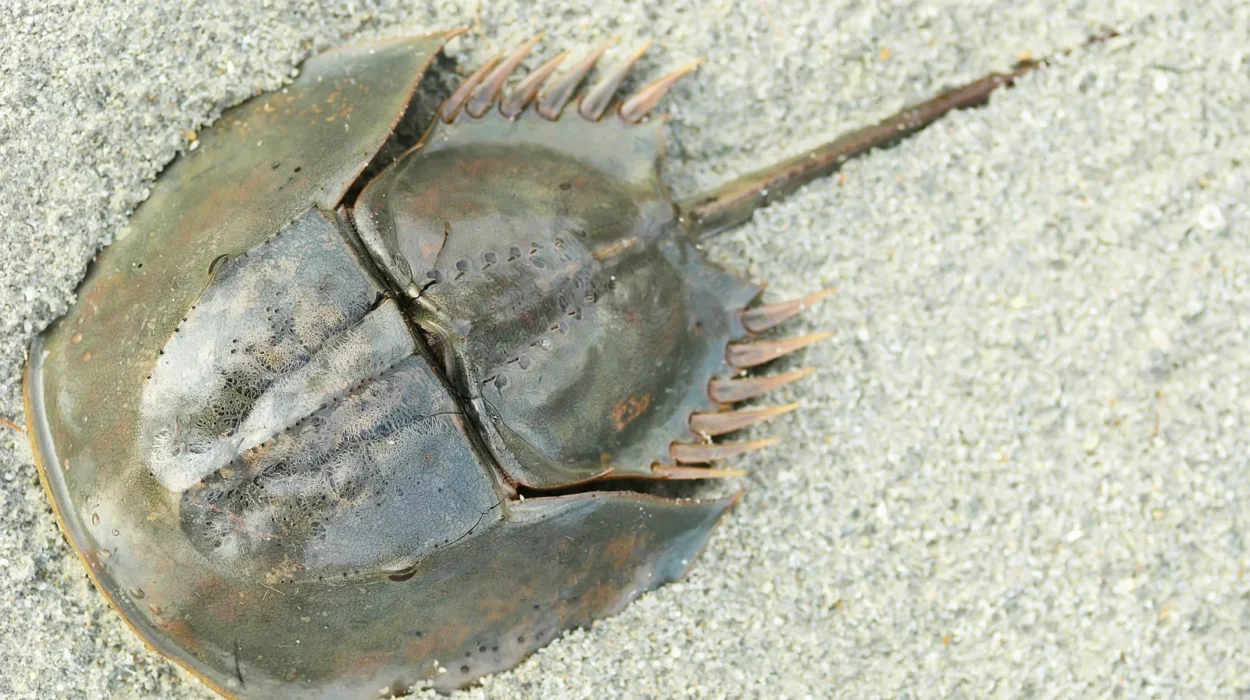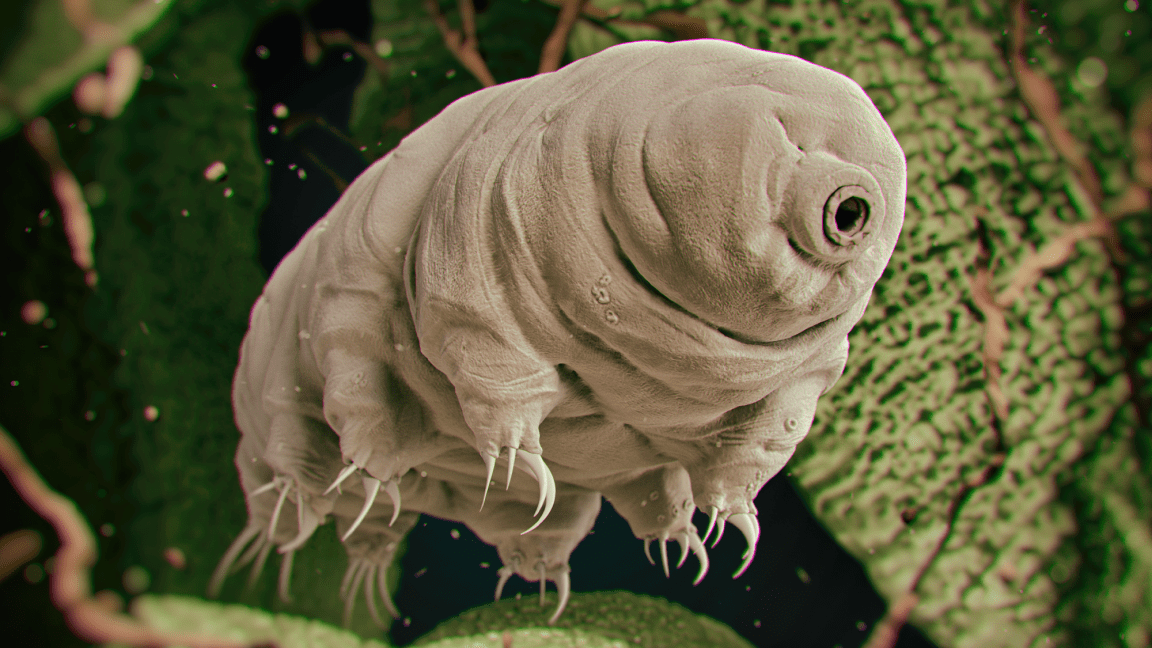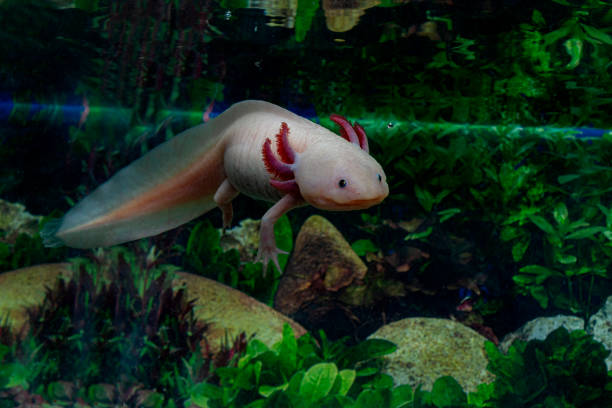In the vast expanse of Earth’s oceans, where countless species rise and fall in the endless rhythm of life and death, there exists a small, transparent creature that appears to defy one of the most fundamental laws of biology—aging. Known as Turritopsis dohrnii, this tiny jellyfish has earned the title “the immortal jellyfish” for its extraordinary ability to seemingly reverse its aging process and return to a juvenile state after reaching maturity. For many years, it has fascinated scientists, inspired philosophers, and captured the public imagination as nature’s closest example of eternal life.
But does this jellyfish truly live forever? The question invites both wonder and caution. Immortality, even in the simplest organisms, is not as straightforward as it sounds. To understand what makes Turritopsis dohrnii so unique—and whether it truly escapes death—we must explore the biology, life cycle, genetics, and ecological challenges of this remarkable species. Its story reveals not just the possibility of biological “immortality,” but also the intricate dance between life, death, and survival in the natural world.
The Discovery of an Unusual Creature
The discovery of the so-called immortal jellyfish began in the late 1980s with a young marine biologist named Christian Sommer. While conducting research in the warm coastal waters of the Mediterranean Sea near Rapallo, Italy, Sommer collected small hydrozoans—members of a class of jellyfish-like animals belonging to the phylum Cnidaria. Among them was a tiny, bell-shaped jellyfish only about five millimeters wide.
Sommer kept the creatures in petri dishes for observation and noticed something astonishing. Instead of dying after reproduction, as most jellyfish do, one of the specimens seemed to revert back to its earlier developmental stage, transforming from a mature medusa back into a polyp—the stationary, coral-like phase of its life cycle. In essence, the jellyfish appeared to be aging in reverse.
Further study revealed that this species, later classified as Turritopsis dohrnii, possessed a unique ability among multicellular animals: under stress, injury, or environmental change, it could trigger a process of cellular transformation that returned it to a younger state. Scientists called this phenomenon “transdifferentiation,” and it became the cornerstone of the jellyfish’s claim to immortality.
The Life Cycle of a Jellyfish
To understand the significance of Turritopsis dohrnii’s transformation, it’s essential to know how jellyfish normally live and die. Like all cnidarians, jellyfish have a two-part life cycle involving two very different forms: the sessile polyp and the free-swimming medusa.
The life of a jellyfish begins when fertilized eggs develop into tiny, free-swimming larvae known as planulae. These larvae eventually settle on a solid surface—such as a rock or the ocean floor—and develop into polyps. The polyp is a cylindrical organism that attaches to the substrate and reproduces asexually by budding, creating stacks of small, immature jellyfish called ephyrae.
These ephyrae then detach and grow into adult medusae—the familiar, bell-shaped jellyfish that float through the ocean currents. The medusa stage is typically the final chapter in a jellyfish’s life. It feeds, matures, reproduces, and eventually dies, completing the cycle.
But Turritopsis dohrnii breaks this rule. Instead of dying after reproduction, it performs an astonishing reversal. Under the right conditions, an adult medusa can transform its cells and tissues to return to the polyp stage, effectively starting its life cycle anew. In theory, this process can repeat indefinitely.
The Biology of Reversal: Transdifferentiation Explained
At the heart of Turritopsis dohrnii’s immortality lies a cellular process known as transdifferentiation. This phenomenon allows the jellyfish’s cells to change from one type to another, effectively “reprogramming” their identity and function.
For example, in most animals, muscle cells, nerve cells, and skin cells are highly specialized. Once they develop into their mature forms, they cannot easily transform into other types of cells. But in Turritopsis dohrnii, these mature cells retain a remarkable flexibility. When the jellyfish is injured, starved, or exposed to environmental stress, the cells in its body begin to reorganize. The medusa’s tissues revert into a more primitive state, and the animal’s body transforms into a small, stationary polyp colony once again.
In this stage, the jellyfish essentially reboots its life cycle. The polyp can then produce new medusae, genetically identical to the original, each capable of repeating the process.
This transformation involves an extraordinary degree of cellular control. The jellyfish can deconstruct its own body architecture, redistribute its cells, and form new tissues without undergoing genetic mutation or damage. Scientists studying this mechanism hope to unlock insights into cellular regeneration, aging, and even potential medical applications for humans.
The Science Behind Biological Immortality
When scientists call Turritopsis dohrnii “biologically immortal,” they mean that it has no natural limit to its lifespan—it does not die from old age under normal conditions. Unlike most animals, it does not undergo senescence, the gradual deterioration of cells and tissues over time.
However, this does not mean the jellyfish is truly invincible. In the wild, Turritopsis dohrnii faces numerous threats, including disease, predation, and environmental hazards. It may escape aging, but it cannot escape being eaten by fish or destroyed by changes in its environment. Its immortality, therefore, is conditional—it can theoretically live forever, but practically, it rarely does.
This distinction between biological and absolute immortality is crucial. Absolute immortality would mean being completely indestructible, unable to die from any cause. Biological immortality simply means that the organism does not die due to intrinsic aging. In that sense, Turritopsis dohrnii is immortal only within the boundaries of its biology, not beyond the laws of ecology or chance.
A Closer Look at Its Structure and Physiology
The immortal jellyfish is a small, delicate creature, typically no larger than a pinky fingernail. Its bell is transparent and dome-shaped, with a diameter of about four to five millimeters. Beneath the bell, it has a bright red stomach, visible through its translucent body, and 80 to 90 fine tentacles that extend outward as it matures.
Its simplicity is deceptive. Despite its small size, Turritopsis dohrnii possesses a complex nervous system and a network of stinging cells called nematocysts, which it uses to capture plankton and small particles for food. Its life processes are powered by the same cellular mechanisms that operate in more complex animals, but with one key difference—its cells retain a flexibility that allows them to reprogram and regenerate.
When environmental conditions become unfavorable—such as a sudden drop in temperature, physical injury, or lack of food—the medusa initiates its reversal process. The bell contracts, the tentacles retract, and the jellyfish sinks to the ocean floor. Within days, it transforms into a cyst-like structure, which then develops into a polyp colony. This cycle of rejuvenation can theoretically continue indefinitely.
The Genetics of Regeneration
In recent years, researchers have begun exploring the genetic basis of Turritopsis dohrnii’s regenerative power. Genomic analyses have revealed that it possesses a unique set of genes associated with DNA repair, cellular protection, and stress response. Some of these genes are involved in maintaining genome stability and preventing the accumulation of mutations—a key factor in aging.
In 2022, scientists from the University of Oviedo in Spain compared the genome of Turritopsis dohrnii to that of a closely related, but mortal species, Turritopsis rubra. They discovered that the immortal jellyfish has extra copies of genes that help maintain telomeres—the protective caps at the ends of chromosomes that shorten with age in most organisms. By preserving telomere length, Turritopsis dohrnii may avoid one of the primary cellular triggers of aging.
Additionally, the species exhibits high activity in genes that regulate pluripotency—the ability of cells to develop into different types. This suggests that the jellyfish can reprogram its cells to an earlier state without losing genetic stability, a feat that most complex organisms cannot achieve without developing cancerous growths or malformations.
These genetic insights could have profound implications for human biology. If scientists can understand how Turritopsis dohrnii controls cellular reprogramming and avoids senescence, they might apply similar principles to regenerative medicine, tissue engineering, and anti-aging therapies.
The Ecology and Distribution of the Immortal Jellyfish
Originally discovered in the Mediterranean Sea, Turritopsis dohrnii has since been found in oceans around the world. Its global spread is likely due to ballast water from ships, which transport jellyfish larvae and polyps between continents. Today, it is reported in regions as diverse as the Caribbean, Japan, the Pacific, and the Atlantic.
Despite its wide distribution, it remains an elusive species. Because of its tiny size and fragile body, it is difficult to observe in the wild. Most of what scientists know about it comes from laboratory studies, where controlled conditions allow for observation of its life cycle and rejuvenation process.
In the ocean, Turritopsis dohrnii plays a modest role in the food web, feeding on microscopic plankton and serving as prey for larger marine animals. Its ecological impact is not yet fully understood, but it is unlikely to dominate ecosystems despite its potential immortality. The factors that control jellyfish populations—such as temperature, salinity, and food availability—still apply to this species.
Can It Really Live Forever?
The claim that the immortal jellyfish “lives forever” is both true and misleading. It is true in the sense that it does not die of old age and can theoretically renew itself indefinitely. But it is misleading because the real ocean is not a laboratory.
In nature, most jellyfish do not live long enough to complete even one rejuvenation cycle. They are eaten by predators, damaged by environmental changes, or outcompeted by other species. Even in captivity, not all Turritopsis dohrnii specimens successfully revert to polyps—many fail or die in the process.
Thus, while the species has the biological capacity for immortality, individual jellyfish almost never achieve it. The “immortal” label is more a reflection of its unique life cycle than a literal escape from death.
The Role of the Immortal Jellyfish in Scientific Research
The discovery of Turritopsis dohrnii has sparked intense interest among researchers in aging, regeneration, and developmental biology. It provides a living model for studying cellular reprogramming—how mature cells can revert to a more primitive, versatile state.
In humans, similar reprogramming is achieved through induced pluripotent stem cells (iPSCs), where scientists manipulate genes to turn adult cells into stem cells. Understanding how the jellyfish performs this naturally could offer insights into safe, efficient ways to regenerate tissues or organs in medicine.
Moreover, Turritopsis dohrnii challenges long-held assumptions about the inevitability of aging. It demonstrates that senescence is not universal and that some organisms have evolved to escape it altogether. This has led scientists to reexamine the evolutionary purpose of aging—why most species grow old and die while a few, like this jellyfish, do not.
Evolutionary Perspectives on Immortality
From an evolutionary standpoint, aging and death serve important purposes. They remove older, less fit individuals and make room for new generations, allowing populations to adapt over time. Immortality, on the other hand, may not be advantageous in most environments.
In the case of Turritopsis dohrnii, its potential immortality may be an adaptation to unstable conditions. By reverting to the polyp stage when stressed, the jellyfish can survive harsh periods and wait for better conditions before resuming reproduction. Rather than living forever as a single individual, it ensures the continuity of its genetic lineage through repeated rejuvenation.
This strategy may be less about eternal life and more about resilience—a way to escape death temporarily and persist through changing environments. Evolution, after all, favors survival and reproduction, not necessarily immortality.
The Ethical and Philosophical Implications
The idea of an immortal organism inevitably raises philosophical questions. What does it mean for life to be “immortal”? Is immortality truly desirable, or is mortality an essential part of existence?
For humans, the discovery of an organism that escapes aging touches on deep hopes and fears about mortality. If the biological mechanisms of Turritopsis dohrnii could one day be applied to humans, it might transform medicine—but it could also challenge our understanding of life’s natural cycle. Immortality, as appealing as it sounds, comes with profound biological and ethical complexities.
Some scientists warn that extending human lifespan indefinitely could lead to overpopulation, social imbalance, and psychological strain. Others argue that studying the jellyfish’s biology is not about seeking eternal life, but about learning how to maintain health and vitality for longer. The immortal jellyfish, in this sense, is less a blueprint for human immortality and more a window into nature’s boundless ingenuity.
The Challenges of Studying the Immortal Jellyfish
Despite the fascination it inspires, Turritopsis dohrnii remains one of the most difficult creatures to study in depth. Maintaining its life cycle in the laboratory requires precise conditions—specific temperature, salinity, and food availability. Many attempts to cultivate stable populations have failed because the jellyfish are delicate and prone to contamination or stress.
Only a handful of researchers and facilities have successfully observed its full transformation from medusa back to polyp multiple times. These studies confirm that the rejuvenation process is real but also highlight its limitations. The process does not always succeed, and many individuals die before completing it.
Because of these difficulties, much about its molecular biology, longevity, and ecological role remains unknown. Further research will require advances in marine biotechnology and genetic analysis to fully uncover the secrets of its apparent immortality.
Comparing Immortal and Mortal Life Strategies
In the natural world, immortality is extremely rare. Most organisms, from bacteria to humans, experience senescence. However, a few species—such as certain hydras, planarian flatworms, and lobsters—show negligible aging or continuous regeneration.
Turritopsis dohrnii stands out because it reverses its life cycle completely, rather than simply maintaining youth. While hydras continuously renew their cells and avoid senescence, the jellyfish actually returns to an earlier developmental phase. This makes it unique among multicellular animals and a prime example of how nature can evolve unconventional strategies for survival.
Comparative studies between Turritopsis dohrnii and other regenerative species could reveal universal biological principles governing tissue renewal, genetic stability, and the balance between growth and decay.
The Role of Environment and Stress in Its Immortality
Interestingly, Turritopsis dohrnii’s rejuvenation is often triggered by environmental stress rather than routine aging. Factors such as injury, starvation, or temperature changes prompt the jellyfish to revert to the polyp stage. This suggests that immortality is not a continuous state but a conditional response—a survival mechanism rather than a permanent escape from death.
In this sense, the jellyfish’s immortality is dynamic. It depends on external cues and internal regulation, allowing it to adapt to its surroundings. This adaptive plasticity might explain how it has spread to oceans around the world and survived diverse environmental challenges.
Lessons for Humanity and the Future of Biology
The immortal jellyfish offers more than a curiosity of marine life; it provides profound lessons about biology and the limits of life. By studying how it controls cellular transformation, scientists can gain insight into the fundamental processes that govern aging and regeneration.
Already, research inspired by Turritopsis dohrnii has influenced stem cell biology, cancer research, and aging studies. Understanding how the jellyfish avoids uncontrolled cell growth while regenerating may help develop safer methods for tissue repair in humans. Its genetic resilience also provides clues about maintaining DNA integrity and preventing age-related diseases.
Beyond medicine, the jellyfish’s life cycle challenges humanity’s philosophical views of time, aging, and mortality. It reminds us that life is not always linear and that nature often blurs the boundaries between beginning and end.
Conclusion
The immortal jellyfish, Turritopsis dohrnii, stands as one of nature’s most remarkable examples of biological innovation. Its ability to reverse its life cycle and return to youth represents a profound exception to the rule of aging that governs most life on Earth. Through transdifferentiation, it can transform mature cells into new tissues, rejuvenating itself and beginning life anew.
Yet, its immortality is not absolute. In the wild, it faces predators, disease, and environmental hazards that ensure few individuals survive indefinitely. Its gift of eternal youth is fragile, dependent on perfect conditions rarely found in nature.
Still, the significance of Turritopsis dohrnii extends far beyond the sea. It challenges our understanding of biology and mortality, revealing that even within the boundaries of nature, there exist mechanisms that defy our deepest assumptions about life and death. Whether or not it truly “lives forever,” the immortal jellyfish endures as a symbol of life’s extraordinary capacity to adapt, transform, and persist in the endless cycles of the ocean—and perhaps, in the endless curiosity of the human mind.
